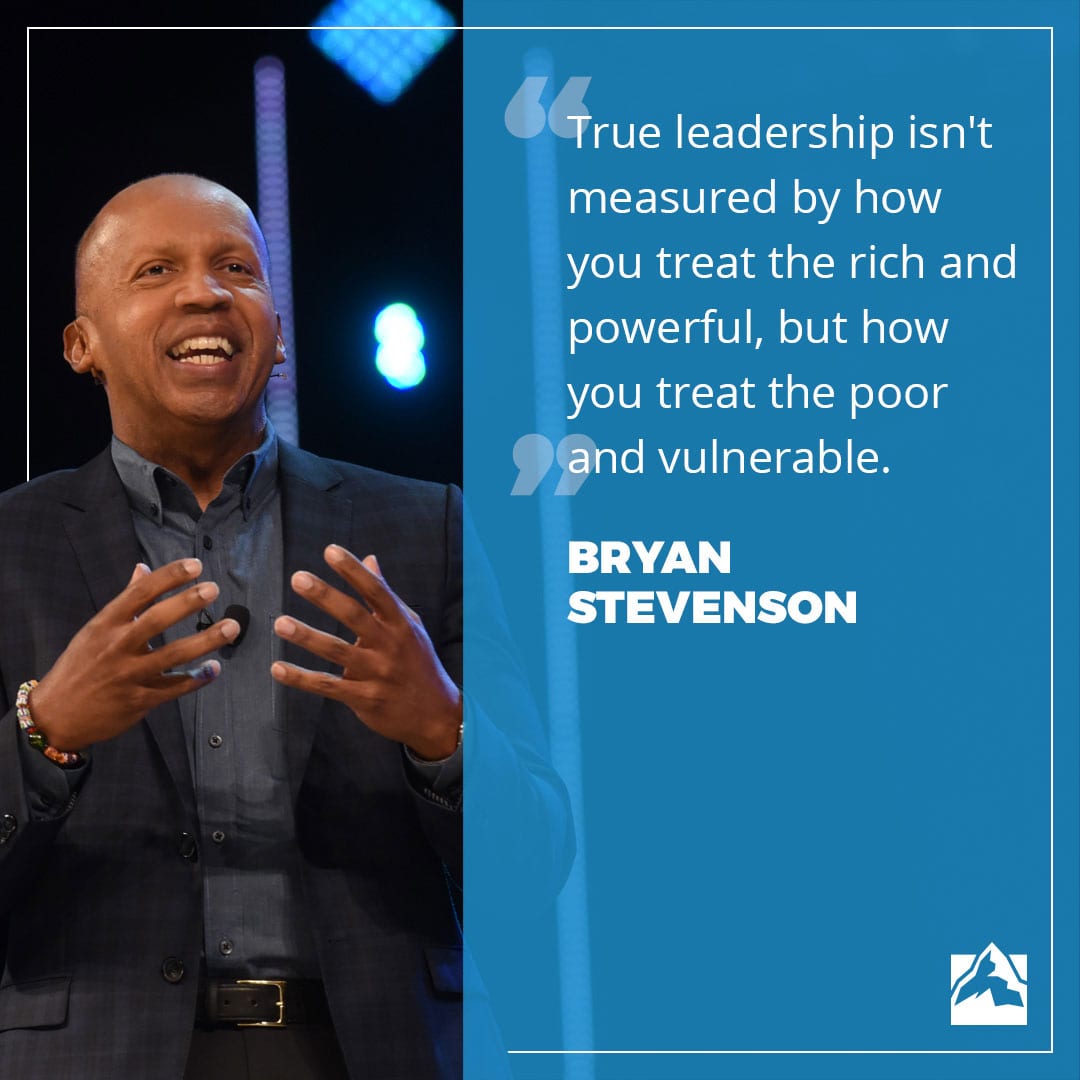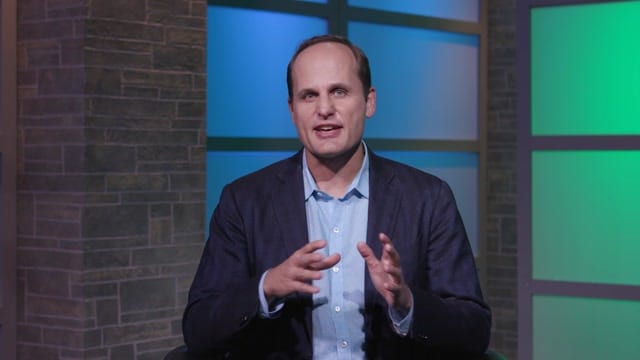
True leadership isn’t measured by how you treat the rich and the powerful, but how you treat the poor and vulnerable.

True leadership isn’t measured by how you treat the rich and the powerful, but how you treat the poor and vulnerable.

Making a case for the power of simplicity is no easy task. And yet, more than ever, I’m convinced that simplicity is the scarcest commodity among leaders, and probably the most important. Here are some good quotes that attest to this on a theoretical level.
Leonardo da Vinci said, “Simplicity is the ultimate sophistication.”
Henry Wadsworth Longfellow once wrote, “In character, in manner, in style, in all things, the supreme excellence is simplicity.”
Albert Einstein believed that “most of the fundamental ideas of science are essentially simple, and may, as a rule, be expressed in language comprehensible to everyone.”
Yet, in my consulting to organizations of all kinds, from high tech companies to churches to banks, I find there is a natural tendency among managing leaders to add unnecessary complexity to situations, problems, descriptions and solutions. As a result, plans do not come to fruition, employees get confused, customers become disappointed and leaders are left discouraged.
So why do leaders do this? Why would they complicate their worlds and create problems for themselves and their organizations?
First, I have to believe they don’t know they’re doing it. Based on my experience, executives generally don’t like to make their own lives more difficult. But since that is exactly what they’re doing, there must be a powerful underlying cause. I’m guessing it has to do with pride—usually the intellectual kind.
Think about it this way. When someone acquires a great deal of knowledge through education, either formally at a university or by reading voraciously about a given subject, it is natural they’ll want to employ that knowledge. In fact, they’ll probably want to use it even if it’s not required, or for that matter, helpful.
Otherwise, they’ll have to admit that all the time, effort and money they put into learning may have been something of a waste.
An example from outside the world of business might be helpful here. Consider a dietician who studies nutrition and exercise physiology for a number of years in school. People hire her to help them lose weight and get fit. Few people in her situation will be satisfied by simply telling clients to eat smaller portions, exercise every day, and avoid one or two particularly harmful foods.
While that would be a more understandable, reliable and actionable solution than a complex combination of vitamins, supplements, Pilates classes and underwater yoga, the latter seems to be a more common prescription if the magazine covers I see at the grocery store check-out lines are any indication.
This same thing happens among executives who overcomplicate their work in the areas of management, strategy or marketing.
For instance, many CEOs who are faced with a difficult executive on their team will spend great amounts of time, energy and money procuring an executive coach or doing an exhaustive 360-degree feedback program when what they might need to do is just sit down and kindly tell the guy that he’s been acting like a jerk and he needs to stop.
I’m guessing that a successful gas station manager or restaurant owner would do that, but then again, they’re probably not encumbered by excessive knowledge or an overly sophisticated education.
When it comes to managing priorities and projects within their organizations, many executive teams use the most complicated and detailed systems, yet they often remain confused about what is going on around them. I’m always amazed at how receptive CEOs and their teams are when we introduce them to our simple one-sheet scorecard—the one that uses the green, yellow and red approach to assessing progress.
There is nothing sophisticated or complex about it, and I suppose that’s the point and the reason why it is so welcomed.
It probably shouldn’t be a surprise that so many successful entrepreneurs dropped out of college or came from relatively modest educational backgrounds, and for that matter, that relatively few of them have a Ph.D. A person with a humble background is going to have an easier time being, well, humble, and embracing an idea or approach that isn’t terribly impressive, but simply works.
Shouldn’t the real measure of an idea, system or approach to a problem be whether it actually works or not? For many executives, who are enamored with sophistication, that isn’t enough. Often, they seem disappointed by simple but effective solutions to seemingly complex problems.
I think one reason for that disappointment is that simple solutions usually require discipline and hard work over time, while the sophisticated ones seem like shiny silver bullets, capable of making a problem go away in one innovative shot. After years of studying, reading and learning, it can be disconcerting to come to the realization that success comes down to common sense and discipline.
I certainly understand why many of us are so attracted to innovation and sophistication. After all, that is where most of our media and academic community focus their attention.
Simple, workable solutions to problems don’t generally provoke magazine cover stories, journal articles in business schools or features on the nightly news. But they do make for successful companies, informed employees and loyal customers.
I guess that will have to be enough for now.

FIND the best people, GROW them the fastest you can, and KEEP them at the company.

Laszlo Bock, CEO of Humu, former SVP of People at Google, author of ‘Work Rules!’, shares an example of how small interventions at Google impacted employee promotions in a big way.

 As a pastor and church planter in the Philippines, Pastor Bong has a vision to see his country transformed through leaders who have been transformed. The Global Leadership Summit is key in making this a reality. Pastor Bong has had two revelations while attending the GLS. He leads the efforts to bring the GLS to the southern part of Manila, because he wants others to experience the same encouragement he has experienced.
As a pastor and church planter in the Philippines, Pastor Bong has a vision to see his country transformed through leaders who have been transformed. The Global Leadership Summit is key in making this a reality. Pastor Bong has had two revelations while attending the GLS. He leads the efforts to bring the GLS to the southern part of Manila, because he wants others to experience the same encouragement he has experienced.
These are the two powerful ways God spoke to Pastor Bong through the GLS:
“I don’t want to miss a year of the GLS because the Lord is always using it to deal with some area of my life,” says Bong. “Recently I realized that in order to be fruitful, often you have to go through something painful. There are disappointments and experiences you go through where you realize it is all part of your formation. It’s not alien to what God desires for you. It’s not something you should try to get out of but go through.
“When something difficult is going on in your life, you can get confused, but the Summit helps me to get clarity. I can see God at work through these difficult experiences. God has been so kind to reveal these things while I’m at the Summit. The Summit has always helped me see the right perspective.”
“Our disappointments and experiences are part of our formation—and transformation. It’s not something to avoid, but something to go through. It’s not alien to God. Going through something painful can lead to being fruitful.
“When going through something difficult, I find I can get confused. God has provided moments of clarity to me when I’m at the Summit. The Summit has always helped me see the right perspective.”
“Because of the Summit, I have become less controlling,” says Bong. “I realized I need to empower people. I need to trust them, and entrust the ministry to people. I need to believe in them, encourage them, let them make mistakes and let them figure out things. I need to not be afraid that something might go wrong. When I’m away, the church is ok! The church is led by leaders of all kinds, and I feel like I am more relaxed. I’ve learned to release people.
“We have teams right now engaging with the community, reaching out to kids, doing great work in our community, trying to make a difference, and helping the poor. The exciting part is I am not the one being used by God to do those things; I am more of a catalyst—someone who inspires and empowers people to do it. There is freedom and joy in empowering others.”
 Pastor Bong’s vision for the Philippines includes sharing a new perspective on leadership—leadership that serves the community rather than tries to gain power over it.
Pastor Bong’s vision for the Philippines includes sharing a new perspective on leadership—leadership that serves the community rather than tries to gain power over it.
“In my country, we are going through something very difficult right now,” says Bong. “For many years, our country has had an unhealthy view of leadership. It’s based more on popularity. The view is not about solving problems or dealing with real issues, it’s more about making impressions.
“My vision is to see better leaders rise up. What that means for me personally is to raise up church planters. I would like to raise up at least 10 church planters per year, train them and teach them everything I know and send them out to plant churches. I hope this effort can make a dent in bringing about significant change and transformation in my country.”
On behalf of my country, The Philippines, we would like to thank all of you who have been supporting the GLS, especially the GLS in our country. It is very helpful and important. My prayer is that you would continue to support us, and also partner and pray with us. I believe when the leaders of our country become better, our country can change. The Philippines can change when leaders become better. Thank you.—Jesusito Bong Baylon, GLS leader, The Philippines

A common request was delivered to my inbox today.
An executive from a team-building company wanted to interview me for a corporate blog. These types of invitations are flattering, but hard to link to results.
I should have said, “No, thank you.” But a flaw in thinking prompted me to say, “Yes.”
I replied, “Now is not a good time, but I’d be happy to comply in about six weeks.”
According to my calendar, my thinking and (as we will soon discover) my powerful delusion, March was wide open. I assumed it would be a cakewalk compared to the busy January I was already knee-deep in.
Only, if I really think about it, if honesty and clarity truly prevail, January also appeared wide open at one point. It looked open and fluid and interview-ready. But somehow, behind my back, January had filled itself up to bursting—as future time always does and as future time always will.
The phenomenon I’ve just described is called The Six-Week Illusion—a trick our minds play on us as they downplay the potential busyness of a future time, which is just a little bit down the road.
We tend to believe that a coming time will be calmer and easier than the hectic present. Inevitably, this turns out to be an illusion.
Let’s fast-forward six weeks into my future and see exactly what March will hold.
Six weeks into the future, my three boys will still be here and, to my best guess, they will still need grilled cheese sandwiches, countless rides and a patient referee. My personal needs for exercise, home maintenance and a social life will be waiting for me. My husband will need me. My clients will need me. Creative March business ideas will tap me on the shoulder and demand attention.
But, somehow, the beautiful blankness of the unpopulated calendar creates a kind of fantastical hopefulness that affects my choices. I say, “How about later?” Yet, the vicious kicking of busyness down the road continues.
Why is it so hard for me, a smart person who’s an expert on workflow, to do the math? To close my smart eyes and remind myself that events, tasks and trips will surely flood in between now and my six-week future?
Why can’t I conjure, with self-protective accuracy, the knowledge that I’ll no more wish to do the blog interview in March than I do now?
It may be a form of procrastination, or even innocent optimism, like when I think it’s going to take me 15 minutes to cross downtown Los Angeles at 4:45 on a Friday afternoon.
It’s important to understand that this particular type of pain-delay occurs only with mid-value requests. High-value requests receive an excited acceptance right away. Low-value requests are sent to the chopping block due to my clear boundaries and a good sense of maintaining WhiteSpace.
It’s the middle-value ones that get you.
They pique just enough interest to keep them on simmer, but not enough to prompt immediate commitment.
As I have grown in my awareness of The Six-Week Illusion, I have been learning to delay my response until after a little WhiteSpace.
When I see a mid-value request cross my desk:
If I’m still on the fence, I try to choose the “No” because less is always a guiding principle in our office. And I know I’ll never regret having too much time.
I still have a visceral, undeniable feeling that March will be simpler and easier. And in March, I will probably maintain that illusion about May…and in May about July.
I could use a time travel machine to visit my tasked nervous system in future periods. But until my friends in Silicon Valley make that a reality, I’ll just rely on a bit of WhiteSpace to bring the future into focus.

If we understand the true soldier is God, it will allow us to lead without fear.

To become someone you have never been, you must let go of who you have been until now.

I’ve noticed that January is the most productive time for many people: gyms are packed, motivational quotes are tacked to office walls and people are constantly talking about their new diet or their new pledge to becoming a better person.
As someone committed to a life of personal growth, it’s amazing to be surrounded by so many people on a journey toward improvement.
It makes me a little sad to know that just a few weeks later, the gym won’t be as crowded.
Those motivational quotes will be covered up by more pressing things.
The only thing left of some of those diets will be the label on the Diet Coke bottle.
All because good intentions aren’t enough.
See, a good intention is a great idea without consistent action.
A person with good intentions looks at a new year and says, “This year I will do something about my problem.” A person with good intentions might take a first step, like joining a gym, or maybe even take a few steps after that, like working out regularly for the first couple of weeks in January. But inevitably, good intentions don’t last.
By February 1, people with good intentions might already be thinking about their resolutions for next year and crediting themselves for thinking ahead.
I wrote about this in my book, Intentional Living. In fact, I dedicated an entire chapter to the subject. We live in a culture that encourages good intentions, but is less excited about being intentional—and there’s a big difference.
Here are some of the words that describe a life of good intentions: desire, wish, hopefully, someday. Notice anything familiar about them? Do you see a connection? All of those words are about unfulfilled longing. They’re passive.
Now take a look at some words that describe a life of intentionality: action, purpose, definitely, today. What do they have in common? They are all active, in the now, committed. They are the words of people who get things done, people who live intentionally.
I learned about intentionality through my father’s example. When he was younger, he noticed that successful people think differently than unsuccessful people, so he read books to change his thinking. When I was a kid, he turned our house into the place for my friends and me to hang out so he could influence my choice in friends. When he moved into a retirement community, he wanted to be the first resident there so he could greet everyone else.
Even though he’s in his 90s now, my father still accomplishes more than many people much younger than he is, all because he’s always been intentional about his life.
Do you know why most people quit going to the gym so soon after the new year begins? Do you know why so many people give up on their diets, or lose their motivation at work?
The answer is simple: they’re only motivated to improve themselves. And because they’re only in it for themselves, they let themselves off the hook too easily. We grade ourselves on a curve; everyone else is pass/fail.
But what if your actions weren’t motivated by just your own success? What if your diet had more to do with being healthy for your kids? What if your motivation for work was to make the office a better place for everyone else? What if the purpose of the gym was to encourage others as they worked toward their goals?
That’s the key to intentional living: daily actions focused on making a difference, large or small, in someone else’s life.
What about your goals?
Whether it’s to lose weight, work smarter or otherwise improve in some way, how can you shift the focus from yourself to someone else?
I promise you, just that one small change can be the difference between not meeting your goals and succeeding beyond your wildest dreams.

Attorney Bryan Stevenson challenges leaders to reject the narratives of fear and anger that often lead to divisiveness and oppression.
“We welcome and encourage comments on this site. There may be some instances where comments will need to be edited or removed, such as:
If you have any questions on the commenting policy, please let us know at heretoserve@globalleadership.org”
Recent Comments